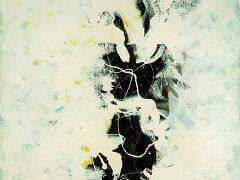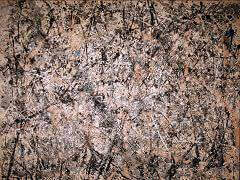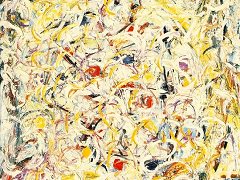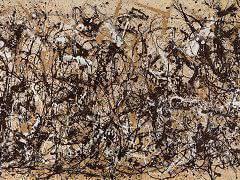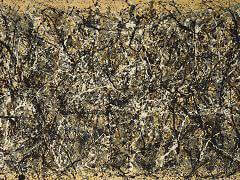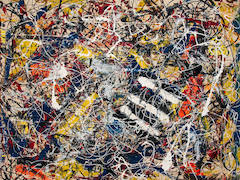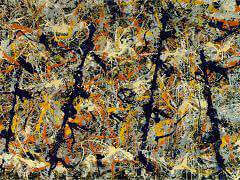Number 1, 1948 by Jackson Pollock

Number 1, 1948 is a masterpiece of the "drip," or pouring, technique, the radical method that Pollock contributed to Abstract Expressionism. Moving around an expanse of canvas laid on the floor, Pollock would fling and pour ropes of paint across the surface. One is among the largest of his works that bear evidence of these dynamic gestures. The canvas pulses with energy: strings and skeins of enamel, some matte, some glossy, weave and run, an intricate web of tans, blues, and grays lashed through with black and white. The way the paint lies on the canvas can suggest speed and force, and the image as a whole is dense and lush yet its details have a lacelike filigree, a delicacy, a lyricism.
While the style of "drip" painting has become synonymous with the name Jackson Pollock, here the artist has autographed the work even more directly, with several handprints found at the composition's upper right. Around this time Pollock stopped giving his paintings evocative titles and began instead to number them. His wife, artist Lee Krasner, later explained, "Numbers are neutral. They make people look at a painting for what it is pure painting." Collectors did not immediately appreciate Pollock's radical new style, and when first exhibited, in 1949 (then titled Number 1, 1948), this painting remained unsold. Later that year the work was shown again in the artist's second solo exhibition (Pollock added "A" to the title to avoid confusion with more recent work) and shortly thereafter was purchased by MoMA.



